PBS News: February 28, 29 and March 1, 2020, New book explores the schemes and scandals of Deutsche Bank, and In the Age of AI (full film) – FRONTLINE,
DW History Documentary: Archeology – exploring the past with modern technology
TED Talks: Rebecca Knill How technology has changed what it’s like to be deaf?, and Sinead Burke Why design should include everyone
The New York Times: Morning Briefing – March 1, 2020
Encyclopædia Britannica: Yellowstone National Park, U.S.
Inspiration Grid: Balancing Act: Still Life Photography by ChangKi Chung
PBS NewsHour Weekend full episode March 1, 2020
Mar 1, 2020 PBS NewsHour
On this edition for Sunday, March 1, a look ahead to what’s at stake on Super Tuesday, new concerns over the coronavirus outbreak in Washington, the legacy of photographer Jim Marshall lives on through his iconic imagery, and climate change’s impact on a natural spectacle in California’s Yosemite National Park. Hari Sreenivasan anchors from New York. Stream your PBS favorites with the PBS app: https://to.pbs.org/2Jb8twG Find more from PBS NewsHour at https://www.pbs.org/newshour Subscribe to our YouTube channel: https://bit.ly/2HfsCD6
PBS NewsHour Weekend full episode February 29, 2020
Feb 29, 2020 PBS NewsHour
On this edition for Saturday, February 29, President Trump addresses the first U.S. death from the novel coronavirus, South Carolina’s Democratic presidential primary takes center stage, the U.S. and the Taliban sign a peace agreement, and Venezuela’s second largest city of Maracaibo was once an oil-wealthy playground, now it’s a ghost town. Hari Sreenivasan anchors from New York. Stream your PBS favorites with the PBS app: https://to.pbs.org/2Jb8twG Find more from PBS NewsHour at https://www.pbs.org/newshour Subscribe to our YouTube channel: https://bit.ly/2HfsCD6
PBS NewsHour full episode, Feb 28, 2020
Feb 28, 2020 PBS NewsHour
Friday on the NewsHour, global disruption from novel coronavirus increases, as governments and businesses shut down travel and large events. Plus: Renewed fighting between Syria and Turkey, the U.S. and the Taliban prepare to sign a provisional peace deal, South Carolina gets ready to go to the polls, Shields and Brooks analyze the week’s political news and a Dallas choir gives the homeless hope. WATCH TODAY’S SEGMENTS How U.S. government should react to virus’ economic impact https://www.youtube.com/watch?v=t05u_… A pandemic expert questions speed of U.S. COVID-19 response https://www.youtube.com/watch?v=nQoaL… News Wrap: Appeals court blocks ‘remain in Mexico’ policy https://www.youtube.com/watch?v=NakPJ… As fighting escalates, Idlib’s humanitarian crisis worsens https://www.youtube.com/watch?v=ynSu6… Afghans nurture hope for peace ahead of U.S.-Taliban deal https://www.youtube.com/watch?v=LjABT… How SC Democratic voters are weighing 2020 primary choice https://www.youtube.com/watch?v=brU3-… Shields and Brooks on SC stakes, Trump’s virus response https://www.youtube.com/watch?v=Nh6Fz… How Dallas Street Choir grants homeless residents a voice https://www.youtube.com/watch?v=TrKi-… Stream your PBS favorites with the PBS app: https://to.pbs.org/2Jb8twG Find more from PBS NewsHour at https://www.pbs.org/newshour Subscribe to our YouTube channel: https://bit.ly/2HfsCD6
New book explores the schemes and scandals of Deutsche Bank
Feb 27, 2020 PBS NewsHour
The fallout from the 2008 global financial crisis revealed that some of the world’s most powerful banks were involved in reckless financial dealings. Germany’s Deutsche Bank took a particularly aggressive approach — the consequences of which are still playing out now, more than a decade later. Paul Solman talks to The New York Times’ David Enrich, who has written a new book on the subject. Stream your PBS favorites with the PBS app: https://to.pbs.org/2Jb8twG Find more from PBS NewsHour at https://www.pbs.org/newshour Subscribe to our YouTube channel: https://bit.ly/2HfsCD6
In the Age of AI (full film) | FRONTLINE
Dec 2, 2019 FRONTLINE PBS | Official
A documentary exploring how artificial intelligence is changing life as we know it — from jobs to privacy to a growing rivalry between the U.S. and China. FRONTLINE investigates the promise and perils of AI and automation, tracing a new industrial revolution that will reshape and disrupt our world, and allow the emergence of a surveillance society. This journalism is made possible by viewers like you. Support your local PBS station here: http://www.pbs.org/donate Love FRONTLINE? Find us on the PBS Video App where there are more than 250 FRONTLINE documentaries available for you to watch any time: https://to.pbs.org/FLVideoApp Subscribe on YouTube: http://bit.ly/1BycsJW #ArtificialIntelligence #Automation #documentary Instagram: https://www.instagram.com/frontlinepbs Twitter: https://twitter.com/frontlinepbs Facebook: https://www.facebook.com/frontline FRONTLINE is streaming more than 200 documentaries online, for free, here: http://to.pbs.org/hxRvQP Funding for FRONTLINE is provided through the support of PBS viewers and by the Corporation for Public Broadcasting. Major funding for FRONTLINE is provided by the John D. and Catherine T. MacArthur Foundation and the Ford Foundation. Additional funding is provided by the Abrams Foundation, the Park Foundation, The John and Helen Glessner Family Trust, and the FRONTLINE Journalism Fund with major support from Jon and Jo Ann Hagler on behalf of the Jon L. Hagler Foundation.
Category News & Politics
Archeology – exploring the past with modern technology | DW History Documentary
Oct 7, 2018 DW Documentary
Today modern archaeology often works with digital technology. Geophysics has allowed thousands of ancient sites to be located – a huge gain for science. The dig is no longer the be-all and end-all of archeology. We accompany some archeologists on their journey into the virtual past. Geophysics comprises a range of techniques with various geological and military functions. Geomagnetism is used to locate enemy submarines or potential reserves of oil or other minerals. Now, German and Irish archeologists have teamed up to use it to trace prehistoric grave systems. Researchers in western Germany are applying it to locate ancient procession and pilgrimage routes. Shipping archeologists in Bremerhaven are availing of digital technology to create virtual models of shipwrecks and, in Berlin, archeologists and game designers have also embarked on a joint project. As luck would have it, they scanned every millimeter of a temple in the Syrian city of Aleppo, not suspecting that, soon afterwards, the complex would be largely destroyed in the country’s civil war. Their virtual model is evidence that the study of the past can have uses for the present, just as technologies of the present can help us to study the past. _______ DW Documentary gives you knowledge beyond the headlines. Watch high-class documentaries from German broadcasters and international production companies. Meet intriguing people, travel to distant lands, get a look behind the complexities of daily life and build a deeper understanding of current affairs and global events. Subscribe and explore the world around you with DW Documentary. Subscribe to DW Documentary: https://www.youtube.com/channel/UCW39… For more documentaries visit: http://www.dw.com/en/tv/docfilm/s-3610 Instagram https://www.instagram.com/dwdocumentary/ Facebook: https://www.facebook.com/dw.stories DW netiquette policy: http://www.dw.com/en/dws-netiquette-p…
Category Education
“Complete silence is very addictive,” says Rebecca Knill, a writer who has cochlear implants that enable her to hear. In this funny, insightful talk, she explores the evolution of assistive listening technology, the outdated way people still respond to deafness and how we can shift our cultural understanding of ability to build a more inclusive world. “Technology has come so far,” Knill says. “Our mindset just needs to catch up.”
This talk was presented at a TED Institute event given in partnership with Wells Fargo. TED editors featured it among our selections on the home page. Read more about the TED Institute.
Rebecca Knill · Writer, business systems consultant manager
TAKE ACTION PARTICIPATE
Support Dogs for Better Lives to match assistance dogs with individuals who are Deaf or with hearing loss.
Sinéad Burke is acutely aware of details that are practically invisible to many of us. At 105 centimeters (or 3′ 5″) tall, the designed world — from the height of a lock to the range of available shoe sizes — often inhibits her ability to do things for herself. Here she tells us what it’s like to navigate the world as a little person and asks: “Who are we not designing for?”
This talk was presented at an official TED conference, and was featured by our editors on the home page.
Sinéad Burke · Writer, educator
Sinéad Burke amplifies voices and instigates curious conversations.
Sinéad Burke Lemonada Media ()
“Poorly designed public toilets aren’t just annoying, they’re dehumanizing”
Sinead Burke discusses the need for more accessible accommodations in public spaces with Quartz.
TAKE ACTION PARTICIPATE
Donate to Little People of Ireland.
TEDNYC | March 2017
The New York Times Morning Briefing March 1, 2020
| Your Weekend Briefing |
| By Tom Wright-Piersanti and Stephen Reiss |
| Here are the week’s top stories, and a look ahead. |
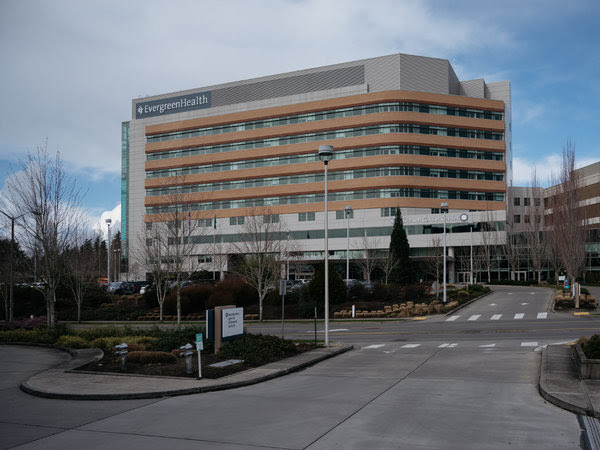
Grant Hindsley for The New York Times
| 1. The first known death in the United States from the coronavirus was reported in Kirkland, Wash., near Seattle. |
| The director of the Centers for Disease Control and Prevention said there was no evidence that the person had traveled recently or had contact with someone known to have the virus, adding to growing signs that the virus might be spreading in the United States. Above, EvergreenHealth Medical Center, where the patient had been treated. |
| The number of confirmed cases around the globe passed 85,000 on Saturday, according to a tracker maintained by Johns Hopkins University, and more than 2,900 infected people have died. While the virus’s growth appeared to slow in China last week, it was accelerating elsewhere, with many new cases linked to an outbreak in Italy. |
| How prepared is the U.S. for an outbreak? It’s better positioned than most countries, according to experts, though there could be shortages of ventilators and protective equipment. The most important thing you can do: Wash your hands often. |
| Sign up for our new coronavirus newsletter, which will have the latest developments and expert advice about prevention and treatment. 2 |
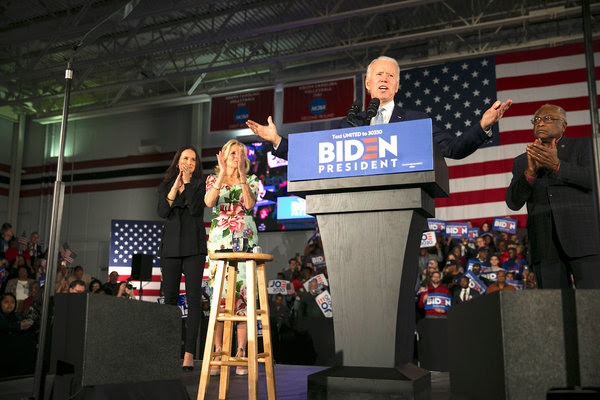
| Maddie McGarvey for The New York Times |
| 2. Joe Biden won the South Carolina primary with 49 percent of the vote,a victory that could provide his candidacy with a much-needed jolt after disappointing results in the earlier contests. |
| Bernie Sanders finished in a distant second with 20 percent, followed by Tom Steyer, who dropped out of the presidential race on Saturday night. Mr. Steyer, a billionaire hedge fund executive, had spent considerable resources in South Carolina, and had pinned the hopes of his campaign on the state. |
| Continue reading the main story |
| He said on Saturday night: “I said that if I didn’t see a path to winning, I would suspend my campaign. And I honestly don’t see a path.” |
| Pete Buttigieg finished in fourth, and Elizabeth Warren in fifth. See full results here. |
| South Carolina’s Democrats were the first predominantly black electorate to vote in the race. Many said they were eager to send a message to the Democratic Party: that their views on electability — which candidate is best suited to beat President Trump — would not be shaped by outcomes in overwhelmingly white states like Iowa and New Hampshire. |
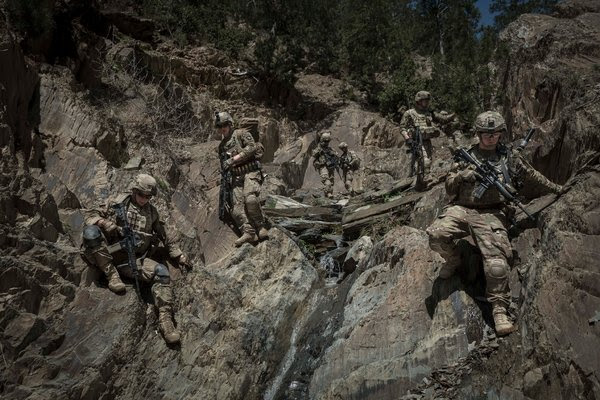
| Sergey Ponomarev for The New York Times |
| 3. The U.S. signed a deal with the Taliban on Saturday that laid out a timetable for the final withdrawal of troops from Afghanistan, setting the stage to end America’s longest war. |
| Continue reading the main story |
| “When historians look back at the moment,” David Sanger writes in an analysis of the news, “they may well conclude that Washington ended up much like other great powers that entered Afghanistan’s rugged mountains and punishing deserts: frustrated, immobilized, no longer willing to bear the huge costs.” |
| The agreement unlocks a difficult but crucial next step: negotiations between the Taliban and other Afghans, including the government, which the Taliban has refused to recognize. Here are four takeaways. |

| Aly Song/Reuters |
| 4. Stock markets suffered their worst week since 2008, with the S&P 500 index falling 11.5 percent amid worries that the coronavirus outbreak could become a worldwide pandemic. |
| The Federal Reserve and other central bankers are poised to respond, suggesting they may cut interest rates as soon as next month. But their efforts may only go so far: Rates are historically low across advanced economies, and it’s doubtful a rate cut can do much to restart production lines hobbled by workers placed in quarantine. |
| “If a potential coronavirus downturn were a fire,” Neil Irwin writes in The Upshot, “the recession-fighters would be like a fire brigade low on supplies, fighting among themselves, and probably lacking the right chemicals to quench the flames anyway.” |
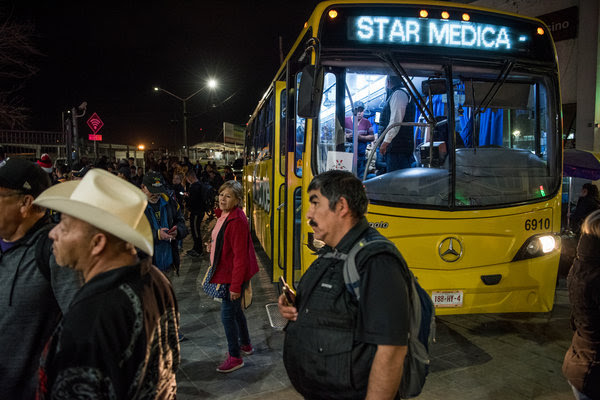
| Cengiz Yar for The New York Times |
| 5. For migrants on the Mexican border, Friday was a day of hopes uplifted, and then quickly dashed. |
| A federal appeals court ruled that the so-called Remain in Mexico policy — which has forced asylum seekers to wait there for months while their cases are reviewed — was legally invalid, leading to cheers and hugs at the Good Samaritan shelter in Ciudad Juárez. But by the end of the day, nothing had changed, as the court stayed the ruling to allow the government time to appeal. |
| And in Turkey, thousands of migrants trying to reach Europe clashed with riot police on the Greek border on Saturday morning, signaling a new and potentially volatile phase in the migration crisis. |

| Jessica Pons for The New York Times |
| 6. The country’s richest state doesn’t feel that way. |
| California’s unaffordability crisis — wide-scale homelessness, poverty and the stress of making ends meet — has emerged as a foundational issue as the state prepares to vote in the Super Tuesday primaries. |
| Nearly 150,000 homeless people sleep on sidewalks, in alleys, on vacant lots and in vehicles. “I pay the bills and I have nothing extra,” Mark Marquez, above, said. |
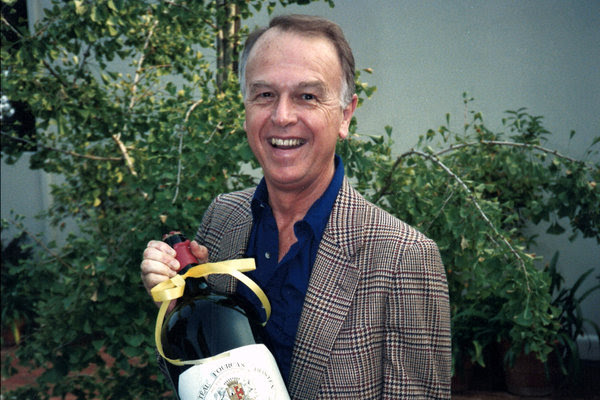
| Esme Gibson |
| 7. In memoriam: Joseph Coulombe, the founder of Trader Joe’s, died Friday at age 89. |
| In the mid-1960s, when he started the grocery chain, he thought the rise in international travel could lead Americans to be more interested in exotic foods. Soon he was emphasizing organic foods, and had launched Trader Joe’s own label for numerous products, many of them at low prices. |
| In 2011, he told The Los Angeles Times that he envisioned the stores as being “for overeducated and underpaid people, for all the classical musicians, museum curators, journalists.” |
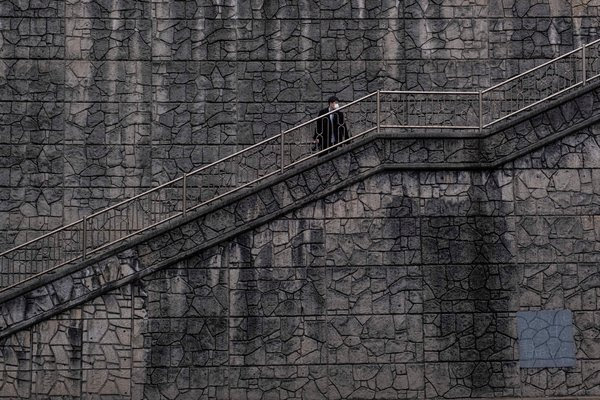
| Lam Yik Fei for The New York Times |
| 8. Meet the “dirt spoons” of South Korea. |
| In Seoul, many of the urban poor live in semi-basements, a reality captured in the Oscar-winning film “Parasite.” Just like in the movie, the elevation of one’s home in the congested city? often reflects wealth and status. |
| “They keep going higher ?and higher, ?so they won’t have to smell the smell down below,” said a 63-year-old taxi driver. “Those living up there must look down on people like me like pigs.” For more information Please visit the following link: [Message clipped] View entire message |
Encyclopædia Britannica: Yellowstone National Park, U.S.
| March 1, 1872 |
| Establishment of Yellowstone as world’s first national park |
Yellowstone National Park
NATIONAL PARK, UNITED STATES
WRITTEN BY: Kenneth Pletcher
LAST UPDATED: Feb 26, 2020 See Article History
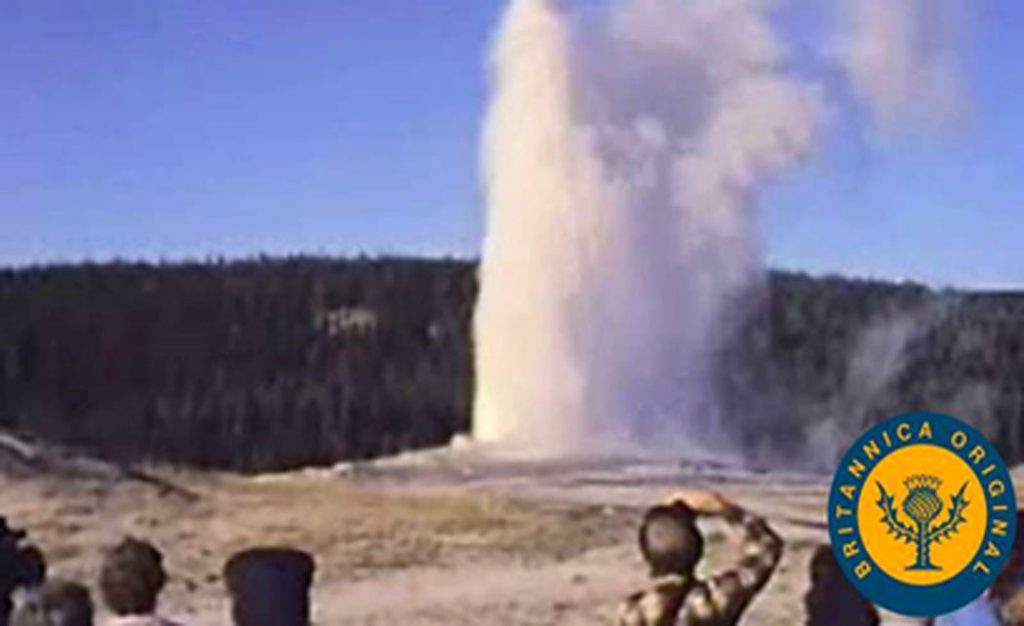
Behold Yellowstone’s hot springs and geysers such as Old Faithful and its various large animal speciesOverview of Yellowstone National Park, northwest-central United States.Encyclopædia Britannica, Inc.See all videos for this article
Yellowstone National Park, the oldest, one of the largest, and probably the best-known national park in the United States. It is situated principally in northwestern Wyoming and partly in southern Montana and eastern Idaho and includes the greatest concentration of hydrothermal features in the world. The park was established by the U.S. Congress on March 1, 1872, as the country’s first national park. It is also generally considered to have been the first national park in the world, though some naturalists and others have argued that there is evidence that indicates that the creation of Yellowstone was predated by the creation of Bogd Khan Mountain National Park in Mongolia, which may date from as early as 1778. Yellowstone was designated a UNESCO biosphere reserve in 1976 and a World Heritage site in 1978. The park, which forms a squarelike rectangle with an irregular eastern side, is 63 miles (101 km) from north to south and 54 miles (87 km) from east to west at its widest point and covers an area of 3,472 square miles (8,992 square km). The John D. Rockefeller, Jr., Memorial Parkway, an 80-mile (130-km) scenic roadway that was established in 1972, connects Yellowstone with Grand Teton National Park to the south. In addition, Yellowstone is surrounded by Gallatin (northwest and north), Custer (northeast), Shoshone (northeast and east), Bridger-Teton (southeast and south), and Caribou-Targhee (southwest) national forests. Headquarters are at Mammoth Hot Springs near the northern entrance to the park.
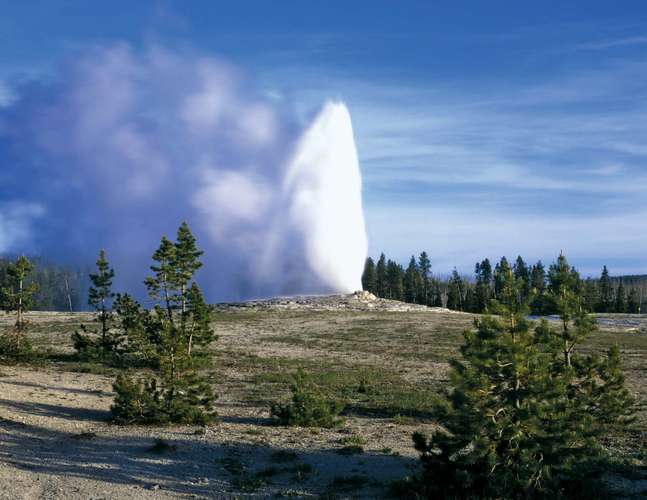
Old Faithful geyser erupting, Upper Geyser Basin, Yellowstone National Park, northwestern Wyoming, U.S.iStockphoto/Thinkstock

Yellowstone National ParkYellowstone National Park, northwest-central United States, designated a UNESCO World Heritage site in 1978.Encyclopædia Britannica, Inc.
Natural Environment: Geology
Yellowstone is situated in a region that has been volcanically and seismically active for tens of millions of years. Tectonic movement of the North American Plate has thinned Earth’s crust in the area, forming a hot spot (a place where a dome of magma, or molten rock, comes close to the surface). About 2.1 million years ago a subsurface magma dome that had been building up in the Yellowstone area blew up in one of the world’s most cataclysmic volcanic eruptions. Some 600 cubic miles (2,500 cubic km) of rock and ash were ejected, equivalent to about 6,000 times the amount of volcanic material that was released during the eruption of Mount Saint Helens in 1980. (Observations made in the early 21st century indicated that this single eruption actually consisted of two events about 6,000 years apart: one very large and a second much smaller one. Subsequent massive eruptions occurred about 1,300,000 and 640,000 years ago—the last event (consisting in large part of lava flows) producing about two-fifths as much material as the first one.
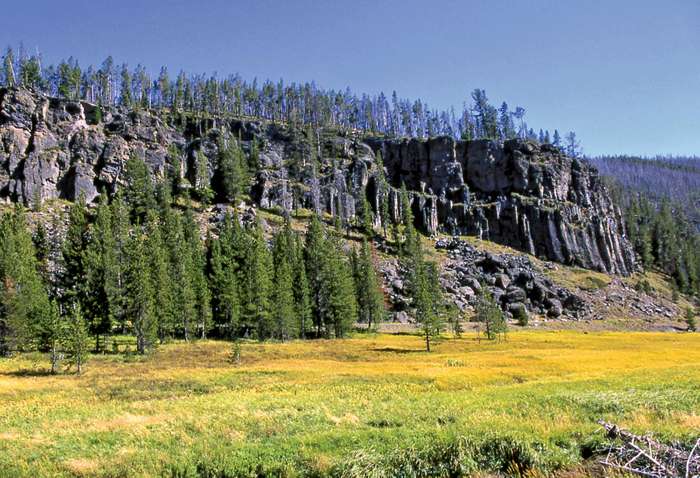
Portion of Obsidian Cliff, northwestern Yellowstone National Park, northwestern Wyoming, U.S.Jim Peaco/U.S. National Park Service
Each of those eruptions caused the magma dome that had built up to collapse as its contents were released, leaving an enormous caldera. The present-day Yellowstone Caldera, the product of the third eruption, is a roughly oval-shaped basin some 30 by 45 miles (50 by 70 km) that occupies the west-central portion of the national park and includes the northern two-thirds of Yellowstone Lake. Two resurgent magma domes—one just north of and the other just west of Yellowstone Lake—have been forming in the caldera, and the western dome underlie many of the park’s best-known hydrothermal features.
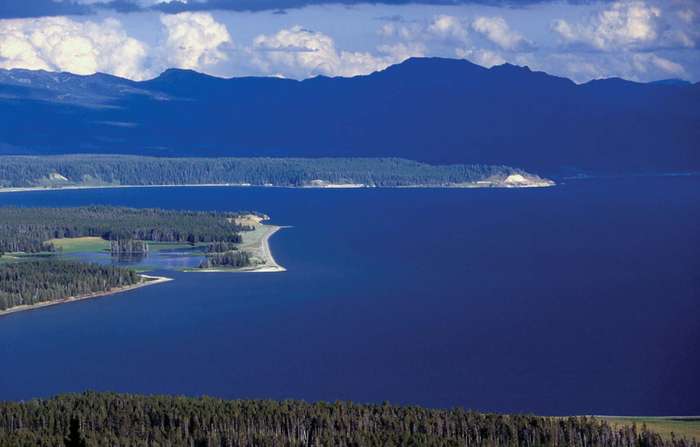
Northern end of Yellowstone Lake, within Yellowstone Caldera, Yellowstone National Park, northwestern Wyoming, U.S.Jim Peaco/U.S. National Park Service
00:4302:38
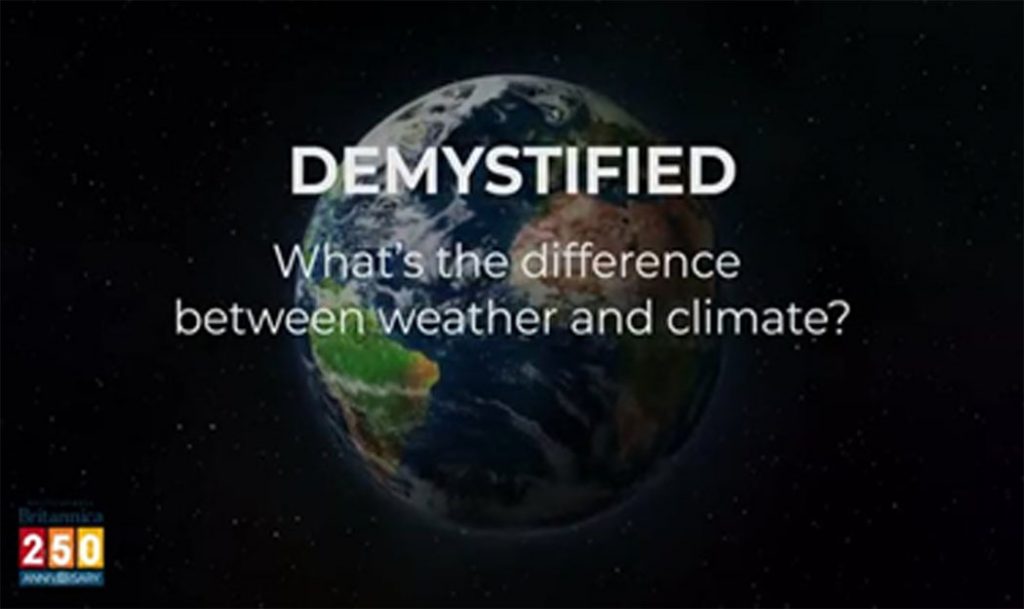
The Yellowstone region is also extremely active seismically. A network of faults associated with the region’s volcanic history underlies the park’s surface, and the region experiences hundreds of small earthquakes each year. The great majority of those quakes are of magnitude 2.0 or less and are not felt by people in the area, but occasionally a more powerful temblor will strike in the region and have effects in the park. One such event, a deadly quake that struck in 1959 in southern Montana just outside the northwestern corner of the park, affected a number of hydrothermal features in Yellowstone, including its iconic geyser, Old Faithful.
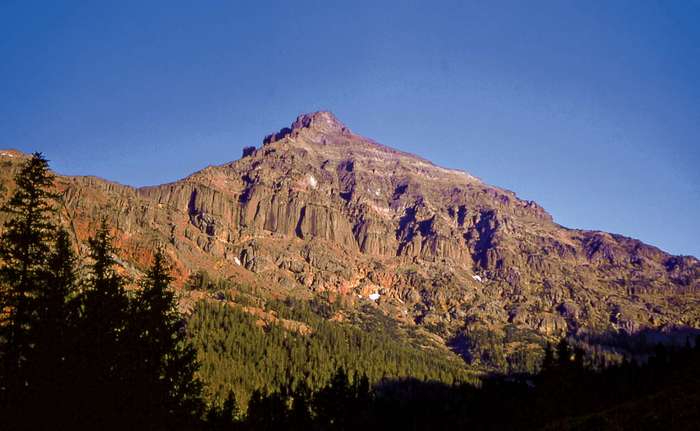
Eagle Peak in the Absaroka Range, the highest point in Yellowstone National Park, northwestern Wyoming, U.S.R Lake/U.S. National Park Service
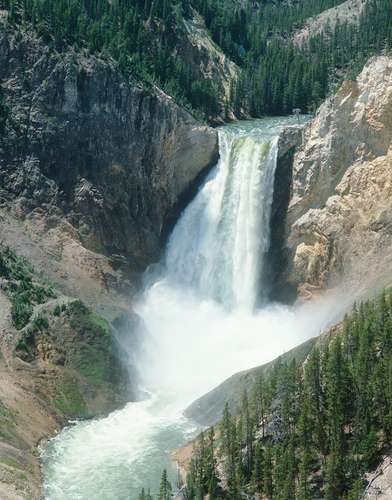
Lower Falls of the Yellowstone River, Yellowstone National Park, northwestern Wyoming, U.S.Scenics of America/PhotoLink/Getty Images
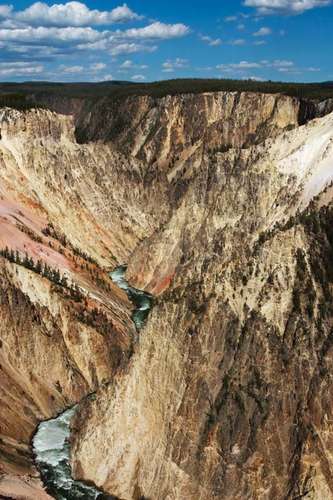
Grand Canyon of the Yellowstone, north-central Yellowstone National Park, northwestern Wyoming, U.S.© magmarcz/Shutterstock.com
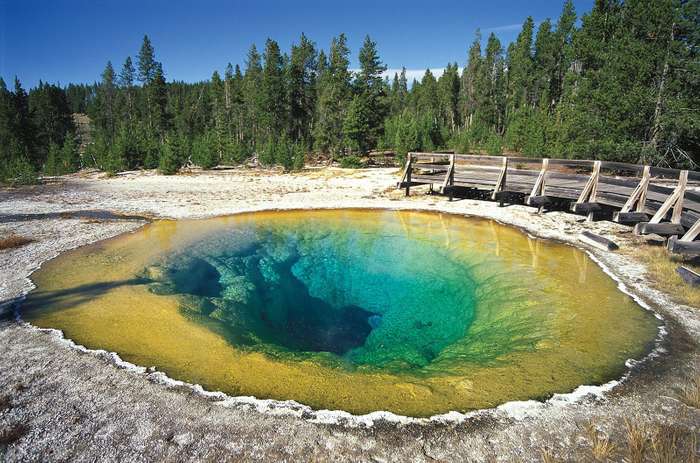
Morning Glory Pool hot spring, Upper Geyser Basin, Yellowstone National Park,
northwestern Wyoming, U.S.
©Ferenc Cegled(/Shutterstock.com)
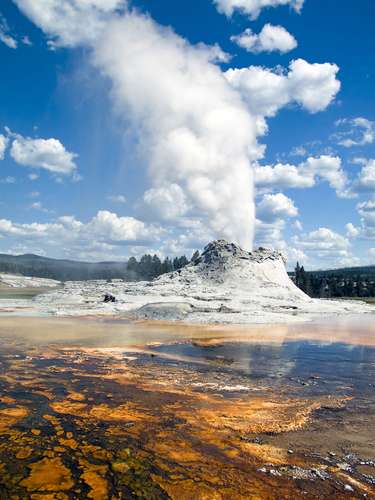
Yellowstone National Park: Castle Geyser
Castle Geyser, Yellowstone National Park, Wyoming
©Kenneth Keifer/Fotolia
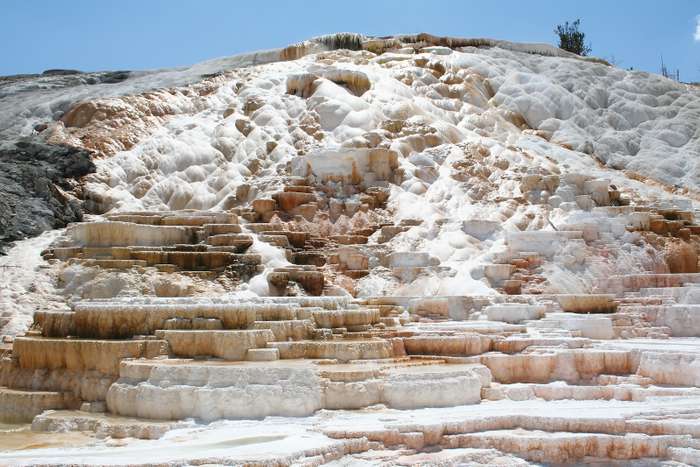
Travertine terraces at Mammoth Hot Springs, Yellowstone National Park, northwestern Wyoming, U.S.© Jason Maehl/Shutterstock.com
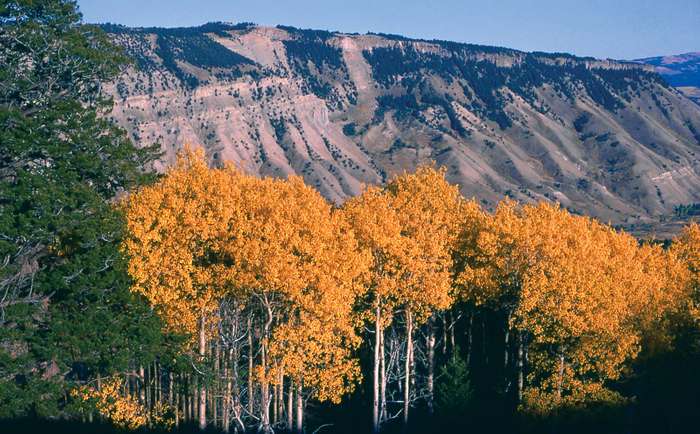
Grove of aspen trees in autumn, Yellowstone National Park, northwestern Wyoming, U.S.S. Gniadik/U.S. National Park Service
For more information Please visit the following link:
https://www.britannica.com/place/Yellowstone-National-Park/Physical-features
Inspiration Grid: Balancing Act: Still Life Photography by ChangKi Chung

Balancing Act: Still Life Photography by ChangKi Chung Published Sep 4, 2019
Korean artist and photographer ChangKi Chung creates incredible, gravity-defying still life compositions of stacked fruits and vegetables.More art on the grid via Colossal










POSTED BY
IG Team 214
For more information Please visit the following link:
https://theinspirationgrid.com/balancing-act-still-life-photography-by-changki-chung/
Leave a Reply